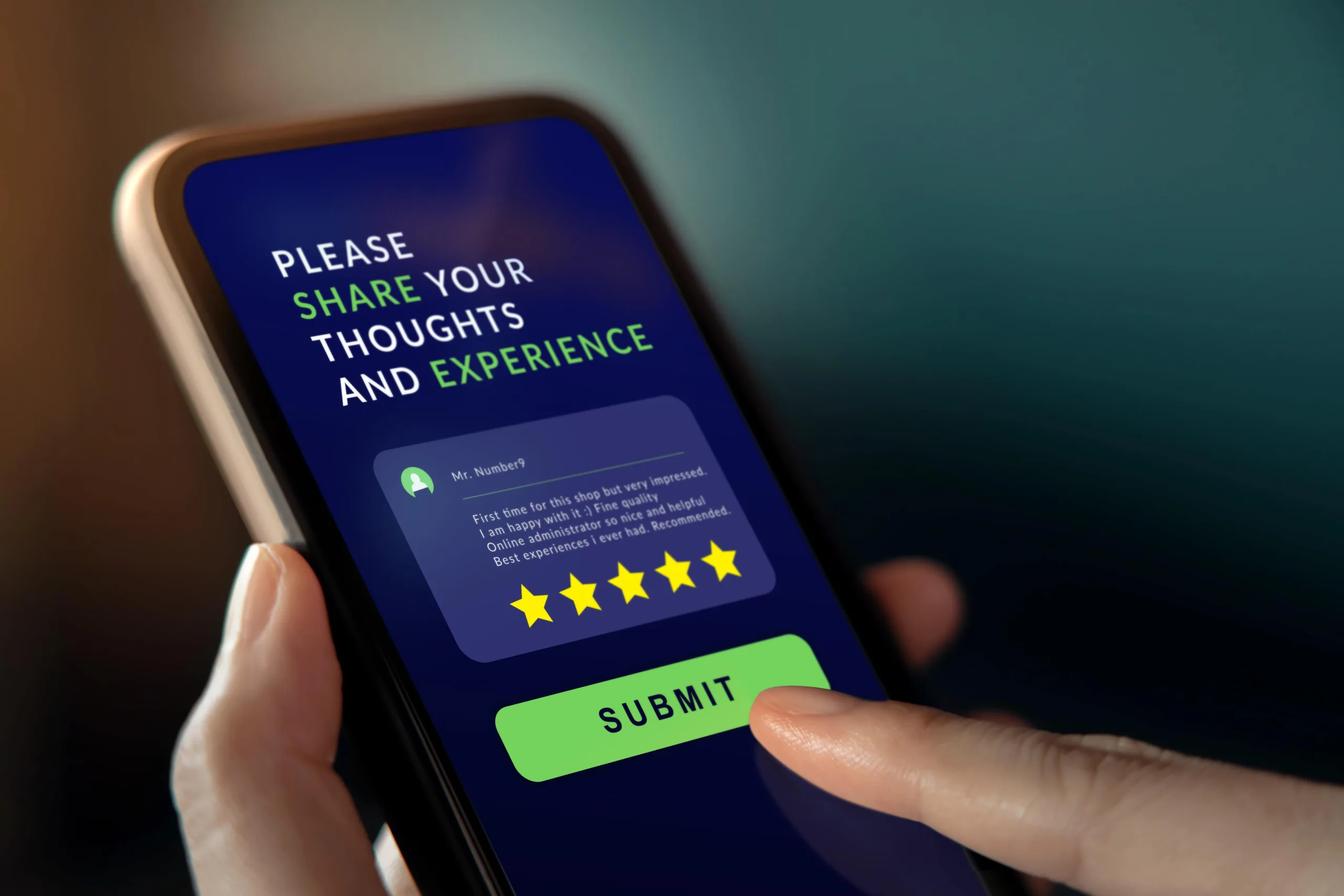RICE: The 4 Phases of Marketing Strategy Crucial to Your Success
- Marketing Strategy

Digital marketing is a must for any business, but it’s a crowded and competitive space. But with the right plan in place, you can carve out a space for your business and find a worthy ROI for your efforts.
If you’re not sure how to create a marketing strategy, the best way to start is to break apart your tactics into marketing campaign phases. The RICE marketing strategy model can help you accomplish this by sorting your work into 4 phases of marketing that can guide your decision-making. That way you can easily identify which areas are the most effective to focus resources on.
The 4 Phases of Marketing: What Is RICE?
Put simply, RICE stands for reach, interact, convert, and engage. RICE itself originates from Hubspot’s inbound marketing model and is a popular variation that many marketers have coined and adapted for use in recent years.

While these marketing funnel stages sound simple, there’s a lot of room for creativity in what tactics you use within each step. If you’re newer to digital marketing it’s common to start in the reach phase and move through the phases in chronological order.
Why Does a Strategic Marketing Management Process Matter?
With careful execution in all the phases of this strategic marketing process, the goal is to see your marketing successfully repeat the RICE pattern with ease over time.
Or simply stated, you know what marketing works for you.
The ultimate goals of your marketing should be about more than just conversions. Your efforts need to work holistically to create a sustainable marketing model. When you achieve that, your marketing will efficiently and effectively support you to scale your business.
Finding the tactics that work for you in each of these 4 phases of marketing earns you more than a sale. You earn a supportive and engaged community of brand ambassadors along the way. (Word of mouth is never dead after all, even in digital marketing.)
Phase 1: Reaching Your Audience
You already know that building a business and waiting for people to find you isn’t enough. So it’s logical that the first phase of a strategic marketing process focuses on a foundational step – figuring out if and how you can reach the right audience.
This stage is focused on being helpful and building your EAT (expertise, trust, and authority) online. It ensures you’re found in the right moments by the right target audience and leaves nothing to chance.
What Marketing Tactics are Used in the Reach Phase?
When it comes to digital marketing, here are the following tactics you need to have in place to solidify your reach:
- Search engine optimization
- Consistent blog/content creation & distribution
- Social media advertising and posting
- Paid per click (PPC) advertising
What KPIs Should I Use in Reach?
It’s a well-known fact that internet marketing comes with a lot of metrics to review. Two of the key metrics we recommend focusing on to assess if you’re successfully increasing your reach include:
- Click-through rate
- Traffic sessions driven from each tactic (social ads, PPC, organic search, etc.)
You may be tempted to look at increasing impressions as an indicator of success, but it’s a vanity metric to view cautiously. If your audience targeting is off at the start, you may have a wide reach but an extremely low click-through rate because you’re not aiming for the right people.
On the flip side, you may reduce your audience size and pull back your reach you have but find a better, more relevant audience in this phase. That’s the better group to pursue and hopefully push through your RICE strategy.
Phase 2: Interacting with Your Audience
The goal here is to make your business accessible. In the 4 phases of marketing, this is the stage where if you don’t have the right infrastructure in place, you risk losing your audience.
What Marketing Tactics are Used in the Interact Phase?
This is the point where good design and user experience are key. Tactics in this phase include:
- Well-designed web forms (with few barriers in the way)
- Email signup / relevant email marketing outreach
- Live chat support messaging
- Clear links to social pages
- Easy-to-find contact information
- Soft calls-to-action (Think of small steps they can take before the step of buying)
What KPIs Should I Use in the Interact Phase?
During this marketing campaign phase, consider using the following in accordance with your campaign goal to measure success:
- Goal completions (in Analytics it could be a quote submission or gated content download)
- Email sign-ups
- Social engagement rate (for ads and unpaid posting)
- Pages per session during organic website visits (Do you meet the standard 2 pages a session or exceed that – below 2 indicates a problem)
- Lead submissions (both from organic or paid marketing)
Again you’ll want to match marketing tactics to the appropriate metric. For example, looking at email bounce rates holds a very different meaning than looking at website bounce rates.
By this stage, you’re likely already doing SEO and content creation (part of the reach setup) to help with your organic marketing in search. So look at pages per session to see how visitors are interacting with your site. Also, consider soft goal completions like downloading an item or signing up for emails.
Whereas if you’re running PPC and paid social advertising, measure form submissions on that page or engagement rate and shares (on social) to name a few.

Phase 3: Converting Your Audience
At last, comes the headline act everyone waits for — the conversion. But for marketers, we know that the time it takes between someone meeting your brand initially and converting can vary widely.
As a part of your marketing make sure you consider the sales funnel your business has built. It will ultimately affect your marketing strategy and how much time it takes to establish and repeat the 4 phases of marketing (RICE).
Some factors that influence the length of time to conversion are the 4Ps (product, place, price, and promotion.) Times to convert on selling a home improvement product for 30,000 will look different from selling $10 books.
Knowing the time it takes for your audience to decide will better help you make marketing decisions about where and how to reach and interact with them, to ultimately push them towards converting.
What Marketing Tactics are Used in the Convert Phase?
Some examples of marketing tactics include:
- Advertising with limited/ exclusive offers
- Marketing automation (to connect with visitors at the right moment)
- Special landing pages with conversion copy
- Hard calls-to-action (Eg. the ‘purchase now’ messaging)
What KPIs Should I Use in the Conversion Phase?
This is likely the simplest stage to measure. Here are some of the common performance indicators companies look at:
- Amount of revenue acquired (does it meet your growth goal)
- Total sales from a campaign
- Number of SKUs sold
Phase 4: Engaging Your Audience
Did you know that roughly 65% of your business can come from existing customers?
While it’s tempting to consider marketing a success at the conversion and call it a day, what you do to engage your audience after the sale is what sets you apart. You’ll notice any successful strategic marketing management process accounts for this final step in the 4 phases of marketing.
You’ve set the stage in reaching and interacting with these customers that converted — now you want to make sure that if they (or a peer) are looking for a product or service, you come to mind again. But to stay helpful and relevant, you need to execute marketing tactics that engage people.
What Marketing Tactics are Used in the Engage Phase?
There will be some repeat tactics from earlier, but the primary difference is that your messaging through those outlets should be more focused on nurturing. Tactics we recommend include:
- Email marketing and automation (follow-up surveys, updates, special messages)
- Organic social media posts
- Digital remarketing
What KPIs Should I Use in the Engage Phase?
As you reach this last step in RICE, it all boils down to this:
- Customer satisfaction rate (if you have capability to collect data)
- Repeat customer rate
- Engagement rate (on organic social media marketing)
- Number of referrals or positive reviews

How to create a marketing strategy: Which Stage of RICE Are You In?
It’s easy to feel eager and want to skip ahead to the conversion stage, but as you work on assembling your marketing plan, audit your business through an unbiased lens. Ask yourself:
- Am I reaching my desired audience in the right places?
- Are people interacting with my business through the desired outlets?
- Am I seeing the conversions I want from my digital marketing efforts (your website, social, PPC, etc.)
- Am I seeing repeat business from those conversions?
If you’re getting interaction but not seeing conversions, you likely need to go back to the interact stage and do some foundational work. If you’re seeing conversions, but a lack of repeat business – then you need to work on the engagement phase. Or if you’re not even seeing interaction via your efforts, start with the reach phase and make sure you’re actually getting in front of the right people.
Need some help figuring out where to start with digital marketing? Contact our team for expert advice in crafting an effective B2B or B2C marketing plan to navigate the digital landscape.
 By Grace H
By Grace H  Ali
Ali  Trevor
Trevor